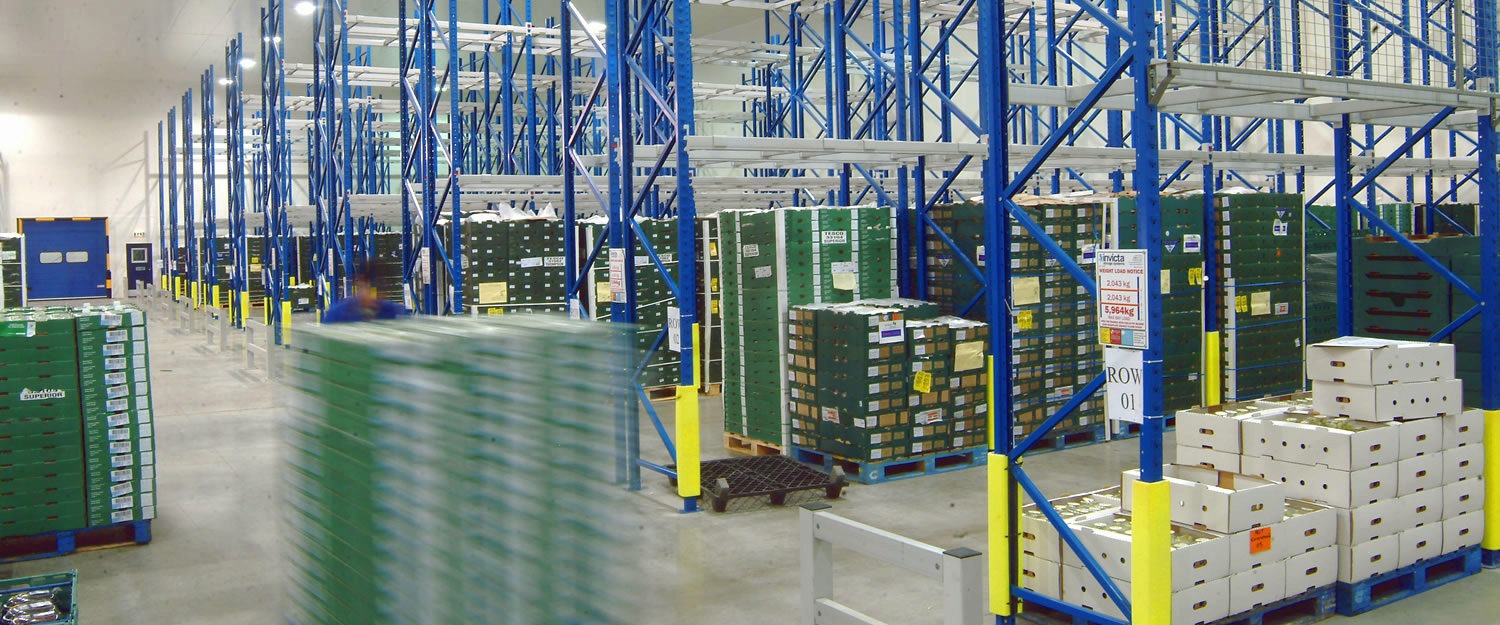For your information
You are being redirected to one of our divisional subsites which contains more detailed information on the required division. To navigate back to the main Invicta Group site, please click the link found in the footer at the bottom of the page.
How to implement augmented reality (AR) in warehouses
31st October 2024
Quick Quote
Contact Mick Coyne
To get a quotation or arrange a free site survey - Call Mick Coyne on
-
 UK
UK
Current location:
Quick Quote
Contact Mick Coyne
-
 UK
UK
Current location:
Technology is at the forefront of modern warehousing and logistics, and it’s more necessary than ever. An economic downturn and labour crisis are causing costs to rise for many businesses, while warehouse space remains at a premium. As a result, businesses are looking for new ways to optimise their existing warehouse space, increasing throughput and reducing costs.
Warehouse tech is often thought about in terms of expensive autonomous vehicles, robots and cobots, much of which can feel out of reach for smaller warehouse operators. However, tech also exists to enhance employee productivity, rather than remove them from the warehouse completely. Augmented reality is an example of a proven technology with clear benefits for productivity and worker safety – and one that shouldn’t break the bank.
What is augmented reality (AR)?
You may have heard of virtual reality (VR) devices such as the Meta Quest 2. These cumbersome-looking headsets contain two screens that provide a 3D-like effect, filling your entire peripheral vision. VR tricks the brain into thinking that what you’re seeing is real – making it feel as though everything that’s happening to you in the virtual world around you is happening in real life.
While this is great for things like video games and immersive art installations, the applications are less obvious for businesses. Where augmented reality (AR) devices differ is that they don’t transport you to a digital world. Sometimes referred to as mixed reality, AR devices overlay digital information on the world around you. By looking through a headset or pair of AR glasses, you can see the real world with digital effects and objects layered on top.
Where VR devices have struggled to achieve mainstream popularity due to their cost and bulky size, AR devices can be both smaller and cheaper. This is because instead of rendering a convincing, fully 3D virtual world, AR devices are simply looking at an image and augmenting it with digital elements. WHst you end up with is a sort of Terminator vision: a ‘heads-up display’ in front of your eyes that shows relevant information about whatever you’re currently looking at (just without the red tint!).
Benefits of augmented reality in warehouses
Augmented reality has already been widely adopted as an enterprise technology, but it has particular potential in warehouses. The unique combination of a fast paced, high risk environment with substantial visual obstructions makes it a common-sense solution, and closer to widespread adoption than you might think,
Safety
Safety is a principle benefit of augmented reality, even if it isn’t a widely advertised one. Virtual reality is already widely used as a training device for warehouse operatives, teaching situational awareness in a realistic warehouse environment. AR extends this to the physical warehouse space itself, augmenting the user’s view of the warehouse with additional information designed to highlight and avoid hazards.
While too much information could overload workers, it can be used sparingly to enhance situational awareness rather than detract from it. A headset could source live data on incidents and risk factors within the warehouse, and make this available to workers by highlighting where problems have occurred, or where traffic is currently busy.
Training AI to spot hazards could be used to draw attention to issues such as overhanging items, poorly stacked pallets, or damaged racking. You could even use live positional data to outline vehicles while they are passing behind racking, as if you had X-ray vision. Such features may require development time, but are not beyond the scope of current technology.
Productivity
With higher throughput, more SKUs and more competitors than ever, distribution and fulfilment centres benefit from even the smallest productivity improvements. Using augmented reality could be a major one, displaying relevant information to operatives while they perform other tasks with hands-free operation.
An augmented reality headset can provide the same information and features as handheld devices, but without need to manually operate the device. As AR headsets can use a built-in camera for QR codes/barcodes, and can include sensors for NFC and other common warehouse sensor tech, the time to locate and interact with items can be cut down drastically.
User friendly
Familiarising any employee with a new piece of technology or equipment is often difficult, and requires a bedding-in period. Unlike many handheld devices, augmented reality is fully enveloping and immersive, and tends to be much easier to acclimatise to. The ability to see all of the necessary information in front of you makes it easier to interact with.
Commercial AR headsets are built for simple and intuitive operation, with voice control or manual buttons to interact, and even eye tracking in the works. The simple user interface of an AR headset presents information overlaid on the world in a way that is directly correlated to what you’re looking at, clearly presented, and easily understandable.
Engaging
New technology can be intimidating for some, but it’s also exciting to many. AR is an effective tech but also an emerging one, and something that will interest and engage a large proportion of your employees, particularly younger ones. The futuristic feel of an AR headset can enliven what may otherwise be a strenuous, repetitive manual job.
The great thing about AR is that the novelty isn’t likely to wear off, since it’s only proved viable in a business setting to date, meaning no proliferation of personal AR devices. Even then, AR is constantly being improved and updated, meaning that there is much more to come in the form of new features, both through software updates and hardware upgrades.
How to implement AR in warehouses
Enterprise AR is designed to be straightforward to use and implement. However, the potential and transformative nature of the technology means that some planning will need to be done, and some allowances may have to be made. Here are a few steps you can take to ensure your warehouse is augmented reality ready.
Optimise racking
While AR technology has the potential to dramatically improve efficiency, it does need to work in sync with the warehouse environment. In order for operatives to see and pick the orders that are appearing on their AR heads-up display (HUD), the racking needs to be configured in a way that makes items both visible and accessible within this system.
A racking format should be used that maximises space at the picking face, while also making any barcodes or RFID labels clearly visible. Wireless blackspots will also need to be avoided to support the bandwidth required by the AR headsets and sensors, which may require an adjustment to your racking density and positioning, something that can be better supported with a modular racking format.
Configure your WMS
Hardware is only as good as the software it relies on, and the same is true for AR headsets. While the technology behind the headsets themselves is impressive, it’s the software that makes them sing. In a warehouse environment, this means integrating them with a warehouse management system (WMS) in order to harness their full potential.
Think of your WMS as the brain that interprets the signals from the eyes (the headsets) and acts upon this information. A WMS can essentially automate inventory and order management, sending orders to workers’ AR headsets and showing them where to go to collect them, and to drop them off. If this capacity doesn’t exist in your current WMS, you may need to upgrade – but it may also be possible to add it with help from software developers.
Empower vision picking
You may already be familiar with radio frequency (RF) picking, where a WMS transmits signals to terminals (e.g. handheld devices) that inform operatives of new orders to be picked, and scan barcodes confirm that the action has been completed. AR is the realisation of a concept known as vision picking, where operatives are provided with an instantaneous and transparent picture of all orders.
By installing base stations and sensors in conjunction with the AR provider, operatives can utilise multiple data points to not only see an order pop up in front of them, but also see where an order is in the physical warehouse space, with the AR headset highlighting an aisle or even a bay to direct them to the item, then show them where to look to scan the item and log it as collected.
–
Thinking about AR in these terms should help to demonstrate the potential of full commitment to the technology, and the changes that might be needed to the warehouse environment to facilitate it. The result can be a warehouse that works more quickly, more safely, and with greater happiness and productivity – all aspects that could give you the edge.











Share/Like this page